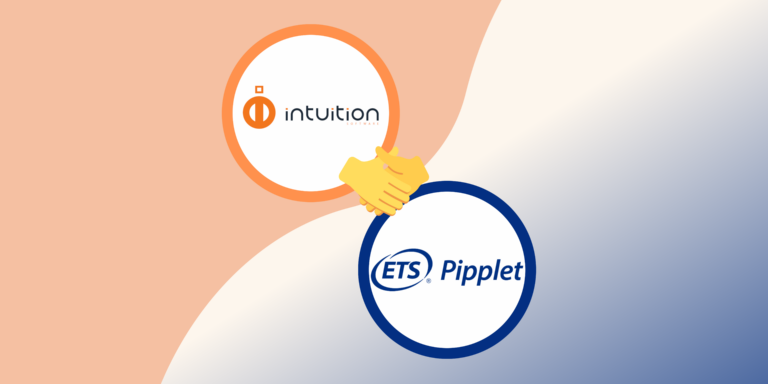The pay policy of a company is a fundamental and strategic element. It can be a real magnet for talent, capable of retaining and motivating them in the long term. To achieve this, companies now have a wide range of pay tools at their disposal. These include individual pay, which consists of individual increases and individual variables. Let’s take a look at individualisation of pay, a practice that is becoming increasingly popular.
Definition and origins of individualisation of pay
In France, the pay system includes a number of tools, including fixed and variable pay for employees. Fixed pay pays for the competence, the value of the position (internal and external) and the potential of an employee. Variable pay, on the other hand, payed performance. This can be individual. This is known as individual variable pay, or collective pay if it concerns the results of an entire team.
The individualisation of pay therefore allows a company to reward the employees of its choice. This reward is individual, for the efforts made over a given period. Although it may seem common today, it has not always been so.
Certainly, some professions have always offered pay proportional to individual performance. This is notably the case for salespeople, who are encouraged to make sales, or for workers, who used to be paid in proportion to the number of pieces produced in a day.
However, the individualisation of pay is in total opposition to the traditional Fordist logic.
With the latter, wages were the result of several criteria defined by collective agreements. In particular, the employee’s skills and seniority were taken into account. In order to ensure a fair distribution of the gains made by the company, union representatives were responsible for negotiating the overall wage development.
Thought to be the opposite of Fordist collective logics, the individualisation of wages appeared in the 1970s, and concerns, as its name indicates, the employee in his or her singularity. Individualised pay can be characterised by:
➔ An individual increase in an employee’s salary (this may be a promotion, due to career development, or an increase, justified by a change in skills for example, noted during an individual assessment interview).
➔ An individual variable, which rewards the individual performance of an employee. In this case, the employee’s salary then consists of a fixed salary base, to which is added an individual variable, paid if the objectives previously set by the company have been achieved by the employee.
➔ An exceptional bonus, intended to reward an employee’s spectacular performance or a remarkable one-off effort.
The primary purpose of individual pay is to motivate teams and boost their productivity. Companies are therefore increasingly using this pay tool to stimulate performance and growth.
Individual variable VS collective variable
If it is collective, variable pay includes team bonuses, profit-sharing bonuses or incentives.
If it is individual, then it offers individual bonuses or share ownership.
What are the advantages of individual pay?
Individualised pay is unparalleled in involving an employee in his or her work and inviting him or her to actively meet the challenges facing the company. So effective, it can be a motivating and performance
for employees. The direct consequence for your company? Better overall performance!
Individualised pay has several virtues:
It allows all your employees to benefit from recognition and to feel in a concrete way the impact of their work on the company’s results. Recognised for what they do, your employees are happier at work, and their performance is increased tenfold! According to a study by the media company Welcome to the Jungle in 2020, “17% of telecommuting employees say they would feel more engaged if they had more recognition from their employers.”
It engages your employees and aligns their individual goals with the company’s overall goals.
It allows you to reward outstanding performance on a one-off basis. If one of your employees has achieved outstanding results, you can choose to reward their prowess on an individual basis and in isolation.
Good to know:
Due to the current context, you now have until 31 December 2020 to pay an exceptional purchasing power bonus to your employees. This bonus is exempt, up to a limit of €1,000, from income tax, employee and employer contributions and social security contributions, and can be paid to the employees of your choice. The only constraint is that your company must have a profit-sharing agreement in place before paying this bonus.
How do you set up a good individualised pay?
A good individualisation of salaries requires a fair and relevant evaluation of your employees. To do this, you need to set realistic and achievable objectives that are in line with your company’s general objectives. These objectives can be quantitative (increase in turnover by x%, increase in customer satisfaction by x%, etc.) or qualitative. Example: team cohesion.
To be accessible to the greatest number of people, these objectives must be clear and understandable to all your employees.
Individualisation: what are the pitfalls to avoid?
➢ First of all, keep in mind that a good pay policy must be fair, equitable, attractive and motivating, while allowing you to optimise your costs.
To be fair, your individualised pay must therefore be transparent and justified. If you choose to reward one employee over another, your decision must be understandable to any employee. To do this, it is essential that your entire organisation understands your pay system and the objectives set for your staff.
Otherwise, you risk causing resentment and frustration among your staff! Which brings us to the second point:
➢ Since individualisation of pay is, by definition, individual, it is thought to be in opposition to the team spirit so necessary to a company. By encouraging your employees to focus too much on their own objectives and results, you risk creating competition, or even a little rivalry or jealousy among your employees. This is not only harmful, but also completely counterproductive. You need united and cohesive employees. In the long run, such disunity could erode the values that characterise your company, and drive away your most loyal talent. Beware!
➢ Remember that business cannot be 100% individual. Since your teams work on projects together, whether or not certain goals are achieved is not necessarily the sole responsibility of your employees individually. Successes and failures are often the result of joint work. So try to measure the performance of your employees rigorously and objectively. Also consider rewarding your teams with collective variables!
➢ There is always a degree of randomness, and this is all the more true in times of health crisis. If your business has been turned upside down by the crisis, don’t hesitate to adapt your teams’ objectives accordingly, or else you will unfairly punish them.
Combining individual and collective
A balanced pay system combines both collective and individual pay tools. In any case, it is an approach that would allow you to motivate your teams individually, while stimulating the collective spirit!
You can, for example, opt for an employee savings scheme. Collective in nature, this pay tool enables you to bring all your teams together around common objectives. With a profit-sharing agreement, you can set criteria. These can be financial, such as an increase in turnover. And, or extra-financial, such as the improvement of your CSR system.
If these criteria are met by your teams, the value created by your company will then be redistributed to your employees.
To remember:
Collective pay costs your company less! The profit-sharing bonus is a solution. It does not involve any social security contributions for the company, nor a fixed social security rate if your company has fewer than 250 employees. This bonus is also deductible from the company’s taxable profit.
Offering an attractive pay policy to your employees takes time! The implementation of individualised pay requires careful consideration.
By carrying out rigorous assessment interviews, you can avoid the pitfalls of individual variable pay. To do this, don’t hesitate to equip yourself with a recruitment software. It will relieve your HR teams of certain particularly time-consuming operational tasks. By simplifying your HR process, your teams will have more time to properly evaluate the performance of your talents. They will be able to reward them fairly.









